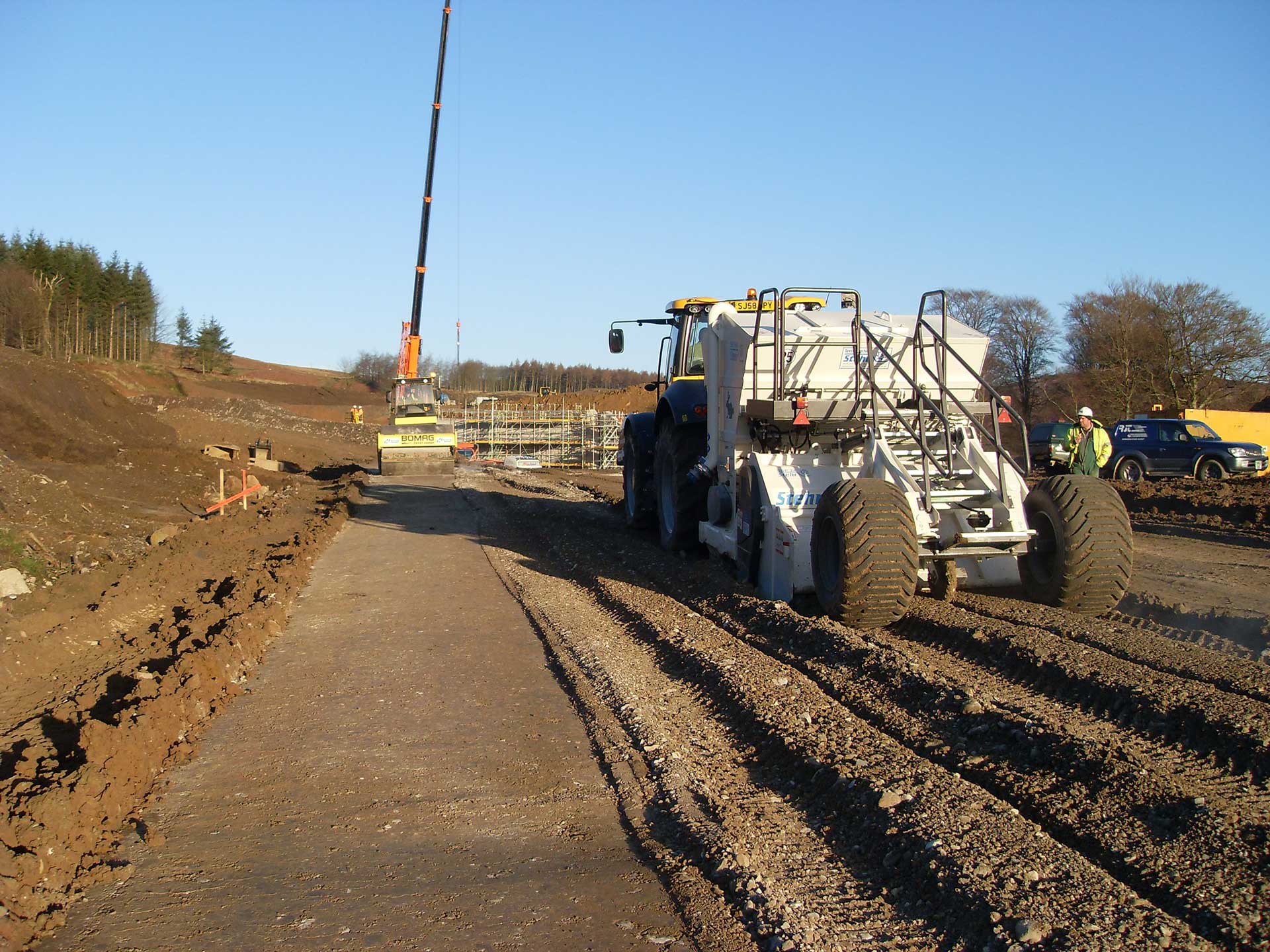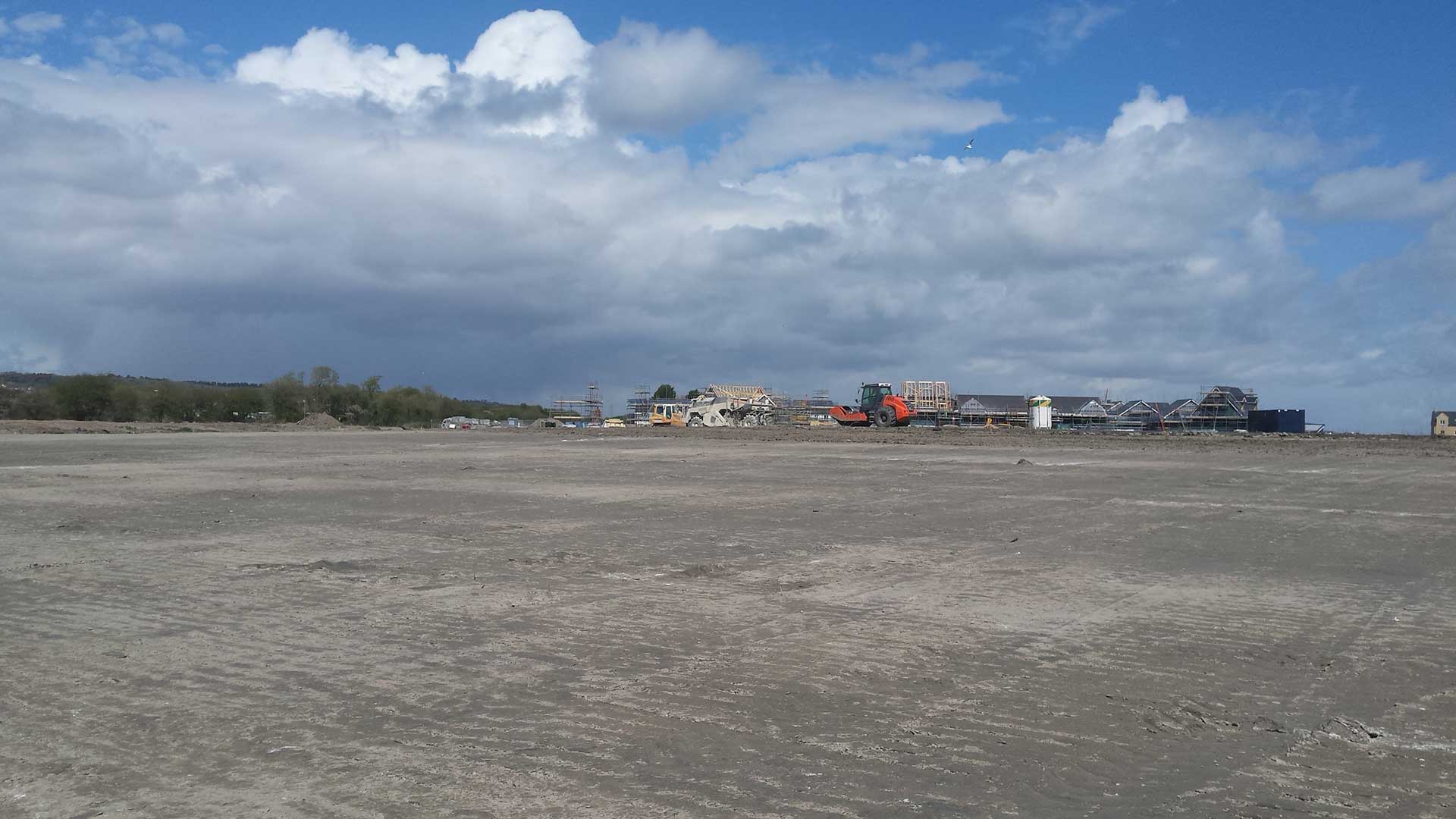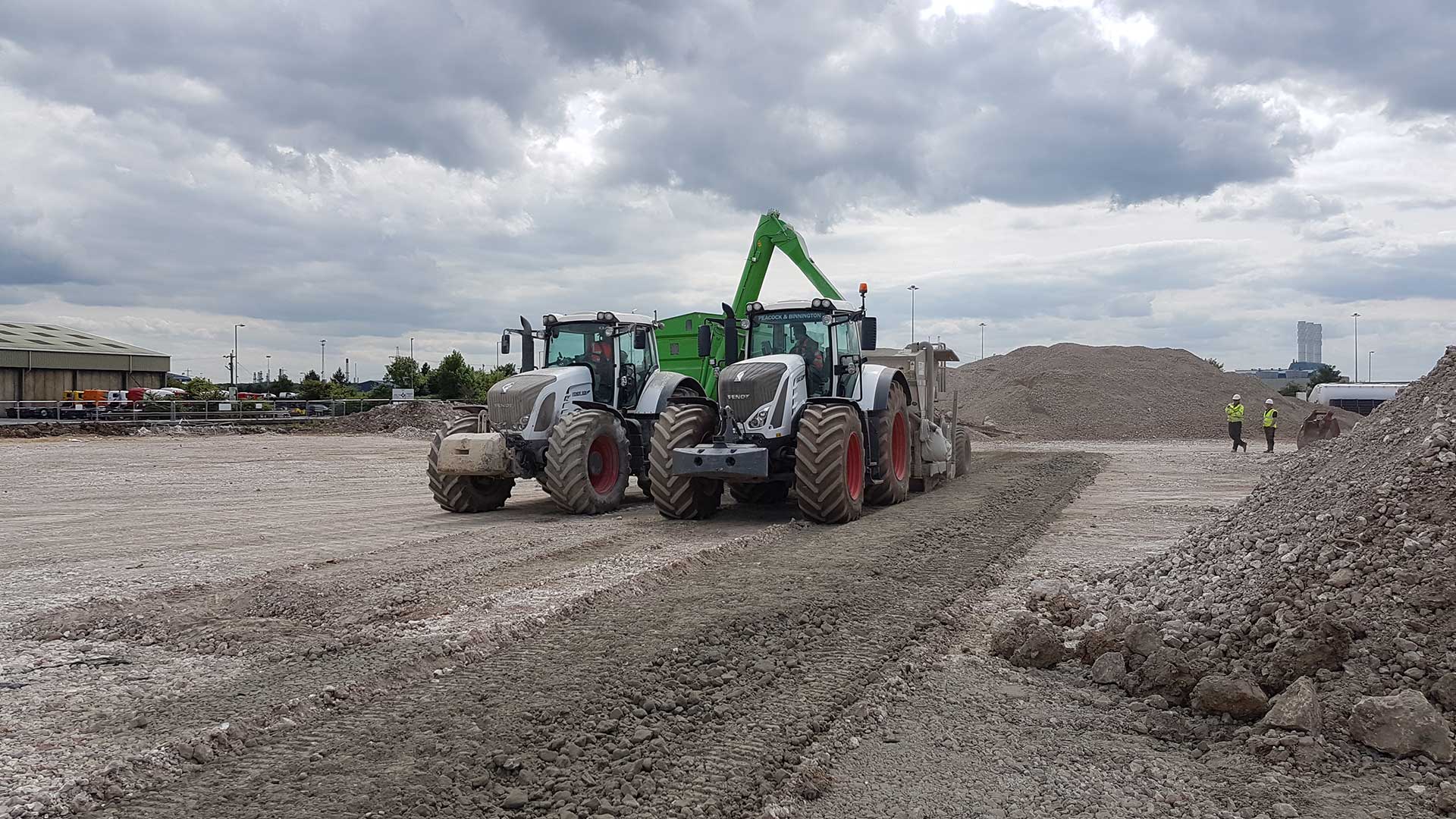PHYSICAL STABILISATION & GROUND IMPROVEMENT
Physical stabilisation is the process of improving the geotechnical properties of a material through the addition of hydraulic binders such as cement and lime.
The stabilisation process is a proven global technology and it has been successfully employed for a number of years. It can be applied to a diverse range of situations and dependent upon the blend of additives and the material undergoing the stabilisation, CBR values in excess of 30% can be achieved.
A selection of the geotechnical improvements that can be achieved using the soil stabilisation process are listed below:
- Soil stabilisation can be used to reduce permeability and compressibility
- Soil stabilisation can increase bearing capacity
- Soil stabilisation can increase shear strength
- Soil stabilisation can decrease the void ratio
THE STABILISATION PROCESS
The stabilisation process is applied through specialist mixing plant, namely a tractor pulled Stehr, a Wirtgen or the Allu PMX Power Mixer. The nature of this specialist mixing plant enables large volumes of material to be processed in-situ or ex-situ and realistic throughputs of >1000m3/day can be achieved.
Quality assurance confirms the integrity of the process and in all application methods, the numerous critical parameters are monitored and logged. These records are further complemented by the operators on board instrumentation which generate production data that is used to finalise the quality control regime.
BENEFITS OF STABILISATION
Listed below are some of the benefits to on site stabilisation:
- Minimised environmental impact – conventional ground improvement techniques involve the excavation and removal of unsuitable materials and the importation of large quantities of virgin aggregates. In stabilisation, this process is replaced by the importation and in-situ mixing of much smaller quantities of binders (>95% reduction in import volumes)
- Reduced project costs – soil stabilisation eliminates the requirement for the disposal of unsuitable material and the purchase of aggregates
- Shorter project timescales – the stabilisation process is consistently more time efficient than the muck away and aggregate import option
- Durability – the finished product is highly durable
- Laboratory testing – all work can be validated using a third party UKAS accredited geotechnical laboratory






